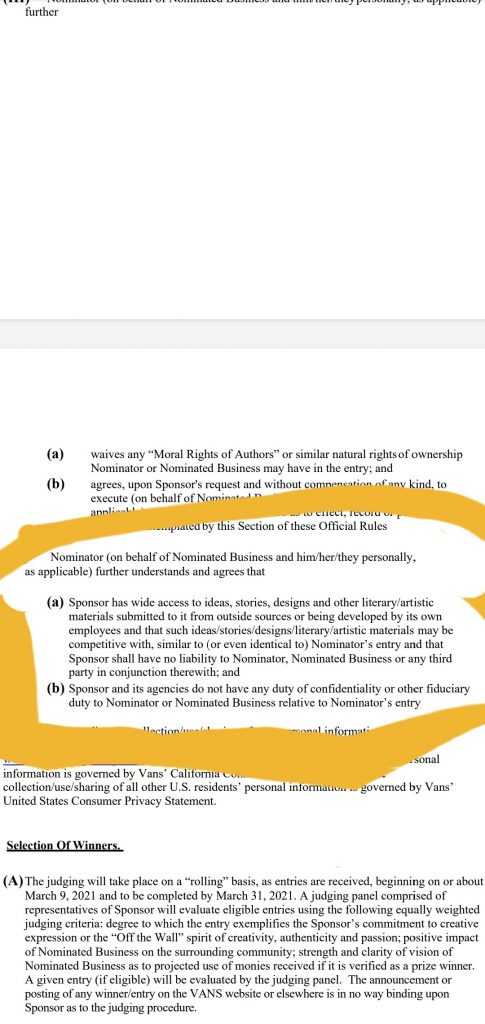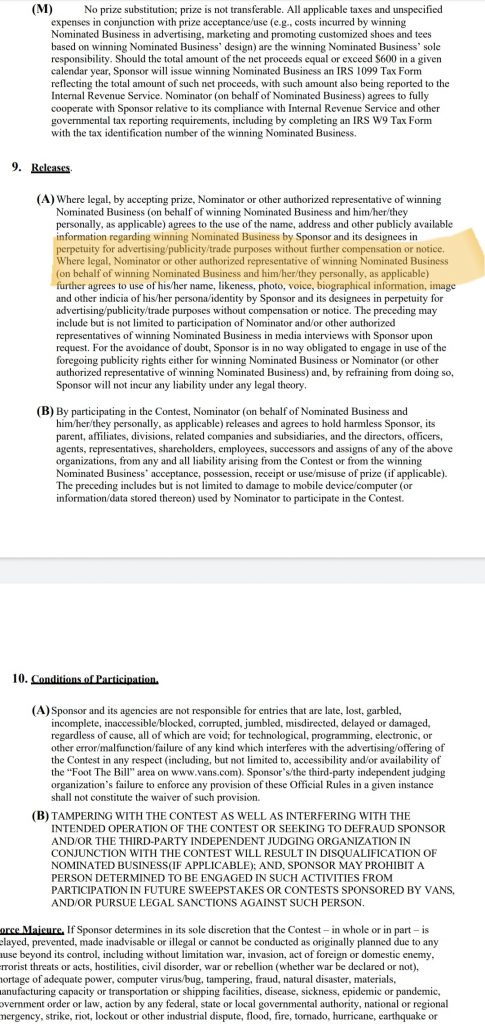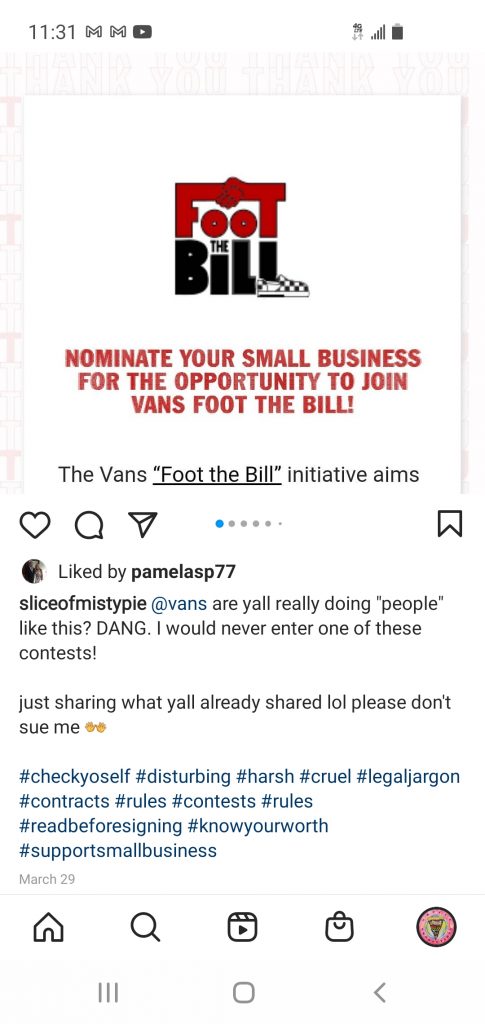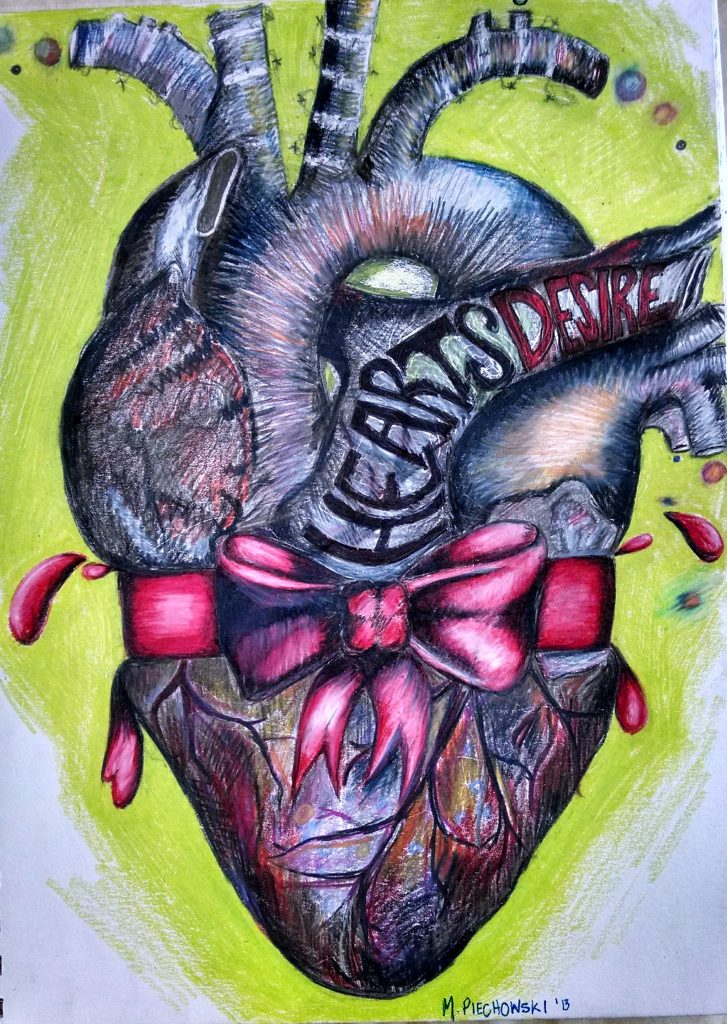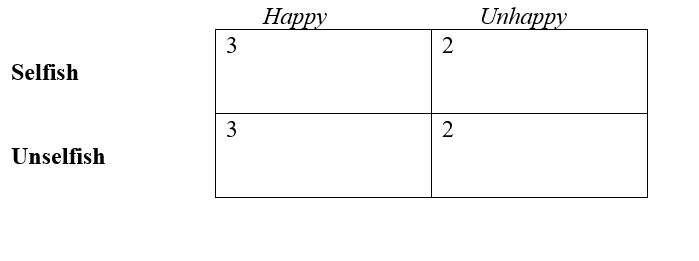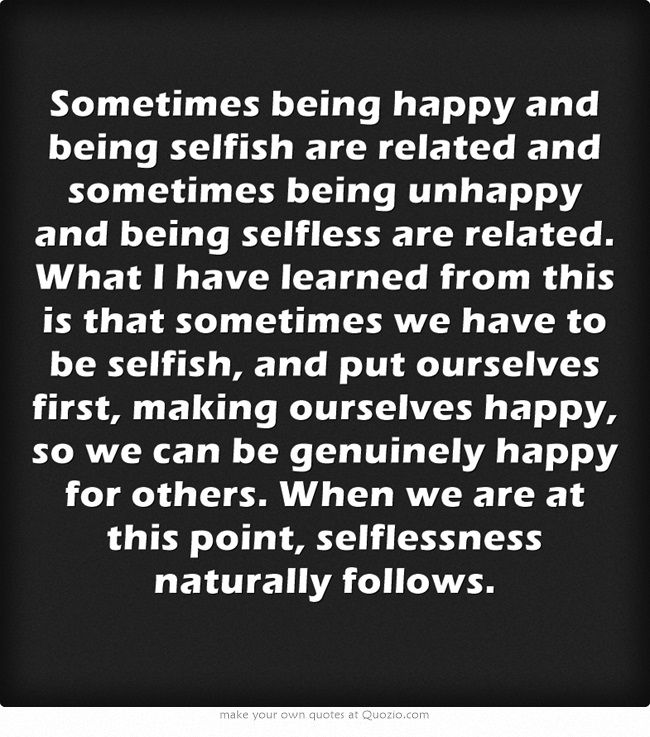Archive #1 – Mod 10
For this exercise, I am including a social norm that I have already violated! I purposely violated this norm as I felt it was my civic duty. Recently, the well-known shoe company Vans marketed a campaign on Instagram. The campaign promoted a contest called the “Foot the Bill” contest in which business owners could submit a design to be selected for a small sponsorship by Vans. At first, I was excited to see this on my Instagram page, as I could really use the exposure and am looking to engage in B2B partnerships. Unfortunately, though, when I read the rules of the contest there were pages and pages of legal jargon that I had to decode to really know what would happen if I entered. What I read was horrifying! Vans literally says they will rip off your designs and that by entering the contest you won’t hold them liable. I’m not even exaggerating! See the images below! I abhor these terms and conditions whenever I see them because they basically ascertain that the company can do whatever they want and can’t be held liable for anything at all! Further, the rules stipulate that the winner would have to not only submit their design, but also promote their own sales.
Vans is just letting one lucky person legally use their brand as a reputation booster. Go even deeper and you’ll also find that Vans is only offering a limited amount of time for their sponsorship. You must agree to allow them to continue to market and promote your design without receiving any further compensation. It’s not even guaranteed that the artist or creator of the design will receive recognition and credit. They’re not paying for the marketing costs associated with this type of promotion, as the name of the contest might suggest. They are simply profiting off their reputation while simultaneously gathering FREE content from the many applications they receive.
As a business owner, I simply cannot accept such an arrangement. This does not feel good, even if it’s what some deem “an excellent opportunity.” If anything, this just feels like big business taking over small business to broaden their reach. Sure, the small business may get more sales, but they honestly don’t know how much profit they’ll receive because Vans will be the one to set the price and Vans is the one who knows the costs of goods sold. Vans will choose the mark-up, so any profit is Vans to distribute. According to the rules, it appears this profit may only be $600—not a lot of money when you know how much money is actually being made with these sales! For example, if 1000 units (pairs of shoes) will be distributed with the winning design on them then you can determine the profit on 1000 units. If you do the math…1000 units x ~$60.00/pair = $60,000 in revenue. The average profit margin for shoes could be 20% which equates to about $12,000 in profit! That’s assuming the COGS for Vans is high, but since they’re a huge company that buys in bulk and likely manufactures overseas to keep costs down, their profit margins are probably more like 40% or $24,000. To only get $600 out of this is a slap in the face, as the small business owner is going to be much more effected by the costs of sponsoring with Vans than Vans is going to be—they’re an international entity afterall.
Anyways, the social norm that I violated was sharing this information in this manner on social media—a big no-no. I initially felt scared to do this, as slander is illegal, but I ultimately decided this is not slander. I simply shared what Vans already shared and included my own opinion. I thought I was professional about it, but I can sense that my friends and Instagram were not supportive of me criticizing big business—especially one they like. I’m probably being perceived as a loudmouth or troublemaker, but I don’t mind that. People need to read the terms and conditions before they engage with a platform, business, etc. as their rights are being written off right before their eyes.
My aunt is the only person that even liked the post (the violated social norm). All my friends ignored it, as I’m sure they don’t want to be associated with or support that type of “resistance.” I even tagged Vans in the description, but they won’t see it unless I tag them in the uploaded photo. Nonetheless, I feel vulnerable and like I’m the bad guy now, but it appears to not matter much as no one wanted to talk about it or engage with this type of post. This could be Instagram’s doing as well. Who knows? Obviously not me! I’ve never been one for social norms anyways.
A Visual Artifact:
Archive #2 – Mod 7
Background: An attitude survey & a behavior survey
I feel like there are inconsistencies with the survey statements. The survey statements on attitudes seem almost impossible to disagree with. Who is going to disagree that recycling is a great way to protect the environment? This is just common sense! Likewise, the statements in the behavior survey were hard to say no to. When I did say no it was only because my current circumstances do not allow me to say yes. For example, I said no to “I habitually recycle to protect the environment” because my property management company is responsible for trash removal at my residence. There is only one trash receptacle for the entire apartment community and it does not appear to be segregated. I am not aware of any additional trash sorting services the property management company may utilize, so I honestly cannot say I habitually recycle. I do try to recycle jars and Ziploc bags as much as possible though!
Another inconsistency I felt was with the statement about reading assigned readings before class. I answered no because I have grown accustomed to an asynchronous schedule. I do not necessarily read “before” class as much as I read during class. This is a minor discrepancy that definitely led me to answer this way. I seriously consider the terminology used in these statements, as this is the only material that I am given to envision the situations being referenced.
Operationalizing the feeling of dissonance requires crafting oppositional statements or reverse engineering some concepts. A simple rewording of the same concept can serve to verify the accuracy of an attitude or behavior. Similarly, you can formulate statements like it has been done here with an attitude survey and then a behavior survey, where the same concepts are measured, but in different contexts to determine the level of convergence between attitude and behavior. Those whose behavior is disharmonious with their attitudes are said to be experiencing dissonance. As you can see, this dissonance is uncomfortable. I support recycling, but cannot not fully participate in this effort, so I offer the reasons for not habitually recycling. In truth, I could take on some more personal responsibility for this process or continue to rationalize my inability to do so.
In another context, such as an intimate one involving romantic relationships, dissonance is much more prevalent and disturbing. Sure, I can blame my parents for my love language, but, as an adult, I must and want to take responsibility for my romantic choices. It is in this context that attitude and behavior do not always converge. For example, being attracted to a man who I have not seen in a long time. Why would I think about him after so long? My attitude of infatuation and adoration does not match the behavior in this context. The dissonance is very strong in this context, yet my attitudes and behavior are slow to change. What I do to balance this is mostly cognitive, as I do not see him anymore. When thoughts of him come up, as we share a memory, I will try to interrupt them with more rational thoughts. I literally must tell myself that the attitude I have about him is not accurate because the physical complement simply does not exist.
I am grateful for the memories but must go through the reconciliation process to remain harmonious in myself. I think people do this to protect themselves, find closure, and achieve more stability. When what we feel matches what we get (i.e. he loves me and his actions prove that) then life is good. I hope to always remember dissonance and respect it, as it is the key to achieving happiness!
I chose to include images of my artwork as a visual representation. The difference in attitude and behavior is much like the head vs. the heart quandary. When the heart wants one thing, but the head wants another dissonance happens. We must use both our heads and our hearts to reconcile the discrepancies between the two.
Archive #3 – Mod 11
Background info: Please write down the initials of 10 people you know fairly well. Then, beside each name, write down whether you think the person is happy (H) or unhappy (UH), and whether you would consider them selfish (S) or unselfish (US)
- _JP____ _UH____ _US____
- _ BL___ __UH___ _US____
- __SS___ __H___ __S___
- _SP____ __H___ __US___
- _WL____ __H___ _S____
- _EL____ __H___ __S___
- _LS____ _UH____ __S___
- __AR___ __H___ __US___
- __AM___ __UH___ __S___
- __LS___ __H___ _US____
Please code the number of people from above who fall into each of the four cells below. For example, if you have three unhappy/selfish people then put a “3” in the unhappy-selfish cell.
Based on my frequency calculations, there was a tie between the Happy-Selfish and Happy-Unselfish pairings with both tallying 3 people each. While selfishness usually accompanies unhappiness, there are more happy selfish people on my list. I believe this has to do with the personalities of the people I am reporting on. I consider them selfish, but they honestly seem like happy people. Most of them are happy to be selfish because it equates to independence and freedom. Seven out of the ten people are family members, though, so I could be completely biased in these assessments, as my memory of them are in informal, casual contexts.
Selfishness, for some, is needed to simply establish an identity apart from the one assigned at birth. These people are not permanently selfish, and since most of them are young adults, selfishness can even be expected and respected. If they were parents, on the other hand, selfishness would certainly be a negative quality to have. One of the selfish people is going into the military, which is very unselfish in nature, but since they are having to make this decision for themselves and it requires disregarding some opposition from those in disagreement, selfishness is at work.
Likewise, my unhappy people are equally selfish and unselfish. I think those in the unhappy-unselfish pairing are unhappy because of unselfishness. Quite frankly, one of those people is my mother. She is incredibly unselfish—sometimes too much so—and I believe it makes her unhappy sometimes. Both people in this pairing are in this pairing for this reason. In contrast, those who are in the Unhappy-Selfish pairing are probably the most common. Selfishness and unhappiness go hand in hand, as the inability to give to others leads to a limited and poor self-esteem. I believe these people are unhappy because they are selfish. More specifically, these people are fiercely independent but very extroverted. They like to be around people and get energized from doing so, but are always at odds with the group—an occurrence that is easily attributable to an individual-group dichotomy that exists in their self-concept(s).
A Visual Artifact:
I chose this quote as a visual representation of my view of the selfishness-unhappiness association. I believe I have a different view of selfishness than the one expressed in the book.
Archive #4 – Mod 5
These are the self-enhancements and other-enhancements that I would do in the following situations:
- Meeting your future in-laws for the first time.
Self: Be warm, friendly, and respectful
Other: Compliment the strengths of their marriage if they’re married
- Going on an interview for an internship.
Self: Dress to kill
Other: Prepare 3 unique and very specific questions to get to know the company better
- Going on an interview for graduate school.
Self: Use appropriate and professional communication
Other: State that the school’s accolades and good reputation are reason for my desired attendance
- Meeting your new boss for the first time.
Self: Arrive to the meeting early
Other: Compliment the new boss’ knowledge or insight or excellent communication
- Meeting the classmates who will be working with you on a group project.
Self: Show up on time and volunteer to take the lead on the first assignment
Other: Ask everyone their name and major and give them space to respond
- Meeting a professor for the first time.
Self: Keep to myself to avoid being disruptive and show respect for the professor’s authority
Other: Address them professionally and thank them for everything!
A Visual Artifact:
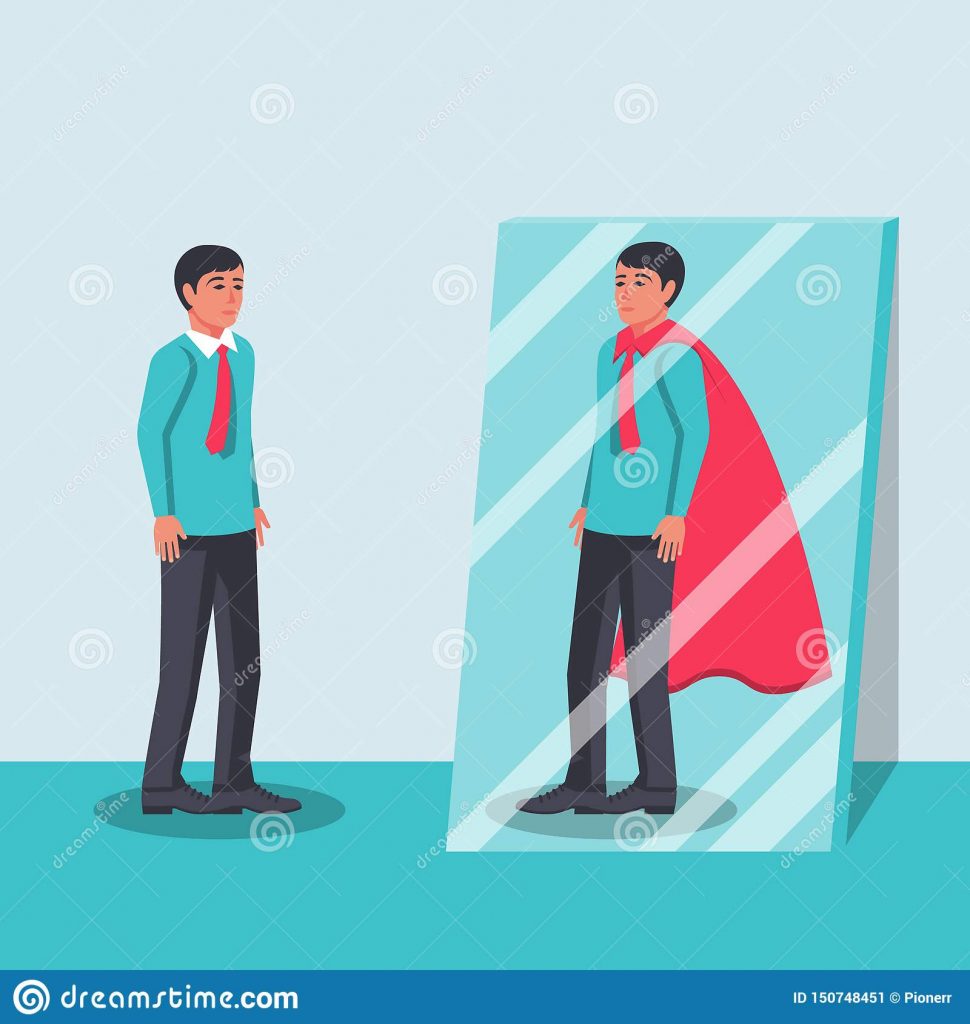
https://www.dreamstime.com/human-looks-mirror-sees-superhero-human-looks-mirror-sees-superhero-confident-power-business-leadership-image150748451 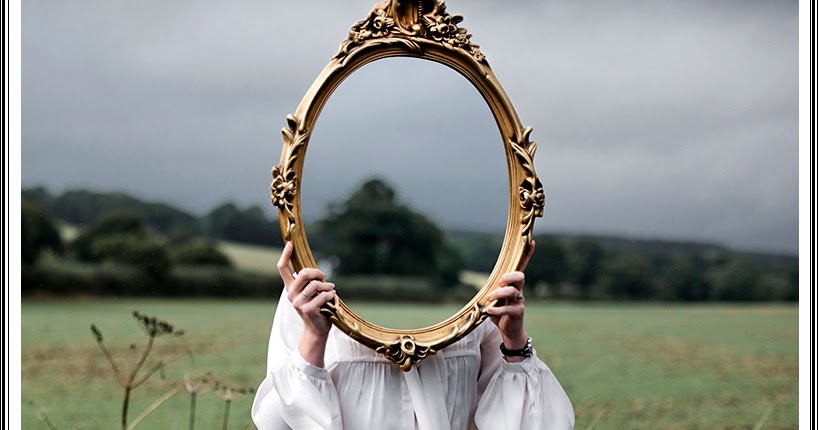
https://ahumanthought.wordpress.com/2017/02/11/mirror-mirror/
Self-enhancement & other-enhancement, respectivelyI chose the image on the left to represent self-enhancement, as it depicts a person in professional attire. Additionally, the imaginary cape in the reflection represents the “added attire” of a healthy self-esteem. Capes are associated with super powers, flying high, and redemption. I believe this person wants to see themselves as capable of rescuing themself. They are their own superhero!
I chose the image on the right to represent other-enhancement, as it represents a way to appeal to others. By mirroring another person’s communication, someone can achieve congruence and increase likeability. Hopefully you’ll be mirroring the other’s best qualities, but it is also possible that mirroring the other’s worst qualities could be life-changing.
Archive #5 – Mod 3
In a brief survey of 4 people, research suggests that statements such as “similarity leads to attraction” and “opposites attract” resonate as true among common folk. No population parameters were designated for this survey, so random selection was used. Relevant findings suggest that “similarity leads to attraction” is more true among platonic relationships, and “opposites attract” is more true among romantic relationships.
Similarity leads to attraction
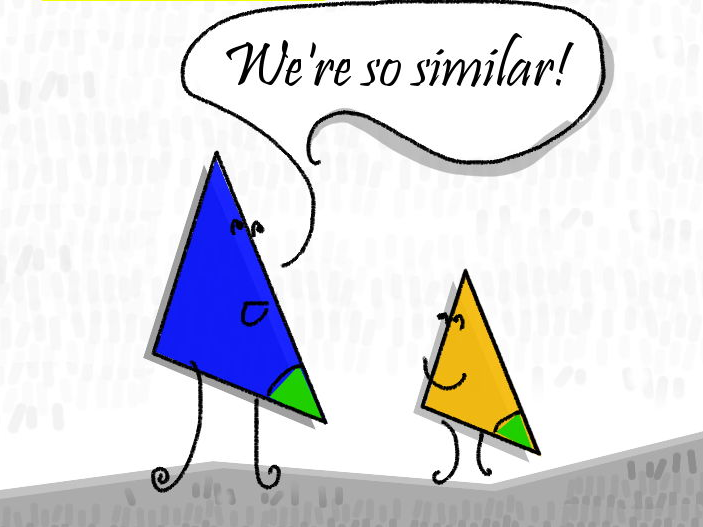
Almost all participants initially found this statement to be surprising, but with further thought claimed it to be true. We want to be friends with people who are like us, and this denotes a type of attraction. Similarity itself is very interesting. For example, people are astounded by twins, and most will claim they wish they had one because physical similarity is so interesting. We wouldn’t want to date someone that looks like us, but many want to date someone who they feel comfortable with which is usually established through similar interests.
Opposites attract
Many participants found this statement to be true, or, at the very least, familiar. While some responses were positive with indications that “opposites attract” describes harmony, balance, and the natural way of life, other responses had a negative connotation with statements of incompatibility, discomfort, and “love wars.” Some people may push themselves beyond comfort zones to experience the full effect of love, or to challenge themselves to be different. Many find themselves attracted to people who they want to be like, but are currently not like.
